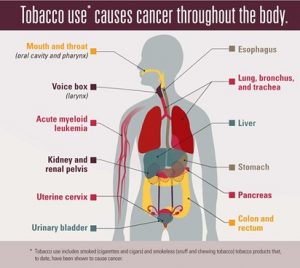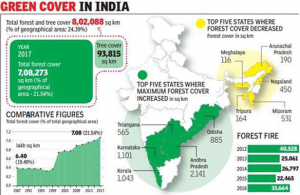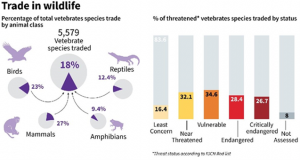THE SOCIAL ISSUES & SOCIAL JUSTICE
NEW ZEALAND ANNOUNCES PLAN TO END SMOKING
THE CONTEXT New Zealand has announced it will outlaw smoking for the next generation so that those who are aged 14 and under will never be legally able to buy tobacco.
THE EXPLANATION:
- The government announced the rising age alongside other measures to make smoking unaffordable and inaccessible, to try to reach its goal of making the country entirely smoke-free within the next four years. Other measures include reducing the legal amount of nicotine in tobacco products to very low levels, cutting down the shops where cigarettes could legally be sold, and increasing funding to addiction services. The new laws will not restrict vape sales.
- New Zealand’s daily smoking rates have been dropping over time – down to 11.6% in 2018, from 18% a deca
 de earlier.
de earlier. - Smoking has already been widely replaced by vaping among teenage New Zealanders and is also attracting many young people who would never have taken up smoking – according to the surveying of 19,000 high school students this year, nearly 20% were vaping daily or several times a day, the majority with high nicotine doses. That’s compared to 3% of those aged 15-17 who smoked daily in 2018, or 13% who smoked a decade earlier.
INDIA’S MEASURES:
- India is the 2nd largest producer and consumer of tobacco and a variety of forms of tobacco use is unique to India. Apart from the smoked forms that include cigarettes, bidis and cigars, a plethora of smokeless forms of consumption exist in the country.
- The Government of India has enacted “The Cigarettes and other Tobacco Products (Prohibition of Advertisement and Regulation of Trade and Commerce, Production, Supply and Distribution) Act, 2003”.
- India also ratified the WHO-Framework Convention on Tobacco Control (WHO-FCTC) in February 2004.
- Further, in order to facilitate the effective implementation of the Tobacco Control Law, to bring about greater awareness about the harmful effects of tobacco as well as to fulfil the obligations under the WHO-FCTC, the Ministry of Health and Family Welfare, Government of India launched the National Tobacco Control Programme (NTCP) in 2007- 08 in 42 districts of 21 States/Union Territories of the country.
Objectives
- To bring about greater awareness about the harmful effects of tobacco use and Tobacco Control Laws.
- To facilitate effective implementation of the Tobacco Control Laws.
- The objective of this programme is to control tobacco consumption and minimize the deaths caused by it. The various activities planned to control tobacco use are as follows:
- Training and Capacity Building
- IEC activity
- Monitoring Tobacco Control Laws and Reporting
- Survey and Surveillance
THE ENVIRONMENT AND ECOLOGY
THE IMPACT OF GLOBAL WARMING ON THE ATMOSPHERE
THE CONTEXT: According to the Ministry of Earth Sciences, the number of Cyclones and the Number of stations reported very heavy and extremely heavy rainfall events have increased in recent years.
THE EXPLANATION:
- Also, the analysis of past data of cyclones over the North Indian Ocean (the Bay of Bengal and the Arabian Sea) during the period from 1891 to 2020 indicates that the frequency of Very Severe Cyclonic Storms has increased in the recent few years over the Arabian Sea.
- However, the coastal vulnerability to the categories of Extremely Severe Cyclones is more continues over the Bay of Bengal region, as there is no significant trend in the frequency of Extremely Severe Cyclonic Storms (ESCS).
- On the other hand, the increase in frequency over the Arabian Sea has not posed a corresponding increase in the coastal vulnerability along the west coast since most of such Cyclones forming over the Arabian Sea are making landfall over the coasts of Oman, Yemen etc and hence the threat to Gujarat & Maharashtra coasts remains same.
- On average, out of 5 Cyclones developing over the North Indian Ocean (NIO) comprising the Bay of Bengal and the Arabian Sea, about 3 to 4 of them make landfall causing loss of life and property.
- Low lying coastal belts of West Bengal, Odisha, Andhra Pradesh and Tamil Nadu & Puducherry are more prone to the impact of these systems. The number of deaths due to cyclones has decreased significantly, as a result of the improvement in the early warning skill by the India Meteorological Department (IMD) under the Ministry of Earth Sciences (MoES) and effective mitigation measures and response actions by the National Disaster Management Authority (NDMA) and Ministry of Home Affairs (MHA). Still, there is a huge loss to property.
Oxygen makes up one-fifth of the air we breathe, and few recent studies reported declining oxygen content in the atmosphere due to the burning of fossil fuels, population growth and deforestation. However, the loss of oxygen is negligible when compared to its abundance in the atmosphere and it is also found that the ecosystem is compensating for some of the loss.
Ministry of Earth Sciences has the mandate only to provide forecasts and early warnings. However, as an adaptive measure to minimize the effects of increasing temperatures, IMD in collaboration with local health departments have started a heat action plan in many parts of the country to forewarn about the heat waves and also advise action to be taken during such occasions. The heat action plan became operational in 2013.

Heat Action Plan
The Heat Action Plan is a comprehensive early warning system and preparedness plan for extreme heat events. The Plan presents immediate as well as longer-term actions to increase preparedness, information-sharing, and response coordination to reduce the health impacts of extreme heat on vulnerable populations. NDMA and IMD are working with 23 states prone to high temperatures at present with respect to the heat action plans.
- IMD has started Forecast Demonstration Project (FDP) on heatwaves from April 2017 for the hot weather season under which a detailed daily report including realized data of heatwaves, weather systems leading to the occurrence of heatwaves, diagnosis on the basis of Numerical Model outputs and forecast and warnings for five days is prepared. This bulletin is disseminated to all concerned including health departments.
- From April 2018 onwards, IMD started issuing an additional bulletin on the heatwave in the morning (08 a.m.) valid for 24 hours to support the planning of activities for the day and this bulletin is also disseminated to all concerned. All these bulletins are posted to the IMD website also, on a special page created for heatwaves.
| Intergovernmental Panel on Climate Change (IPCC)’s Sixth Assessment Report
· The current global warming trends overall are likely to lead to an increase in annual mean precipitation over India, with more severe rains expected over southern India in the coming decades. · In the most ambitious emissions pathway, the projection is that globe would reach the 1.5°C in the 2030s, overshoot to 1.6°C, with temperatures dropping back down to 1.4°C at the end of the century. · India is currently the world’s third-largest greenhouse gas emitter, but per capita emissions are much lower. The U.S. emitted nearly 9 times more greenhouse gases per capita than India in 2018. Based on existing commitments by countries to curb their emission, the world is on track for global temperature warming by at least 2.7°C by 2100, predicts the report, calling it ‘Code red for humanity’. Impact on India The report, warns that with a 7,517 km coastline, India will face significant threats from rising seas. Across six Indian port cities — Chennai, Kochi, Kolkata, Mumbai, Surat and Visakhapatnam — 28.6 million people will be exposed to coastal flooding if sea levels rise 50cm. |
UNCBD AND INDIGENOUS LANDS
THE CONTEXT: The United Nations Convention on Biological Diversity’s Aichi targets to set goals for each country to create protected areas in 2010, and roughly 15 per cent of the world’s land surface is under official state protection. Protected areas have largely been able to reduce deforestation.
THE EXPLANATION:
- The world lost more than 12 million hectares of tropical forest in 2020, an area about half the size of the UK. Tropical forests contain much of the world’s animal and plant species and store more than half of their terrestrial carbon. They are home to people who depend on them for their livelihoods, spiritual and cultural practices and wellbeing.
- But their creation can also mean the eviction of communities that have lived in forests for generations, barring them from resources and sacred sites. These injustices have often been made possible by human rights abuses, including violent intimidation and even killings by state forces and other groups.
- Areas managed by Indigenous peoples cover more than 25 per cent of the world’s land and overlap with 40 per cent of protected areas globally. Studies in Nicaragua and Brazil have found that Indigenous communities with ownership of their land have lower rates of deforestation than neighbouring areas. Often, deforestation in these places is even lower than in protected areas.
- This is usually because Indigenous peoples have developed practices and institutions that prevent the over-exploitation of forests. The Cofán community in Zábalo in the Ecuadorian Amazon, for example, see themselves as tsampima coirasundeccu (caretakers of the forest). They share their daily observations at community meetings and arrive at a consensus over whether to prohibit harvesting certain plants and animals if they are declining.
Indigenous lands and deforestation:
- Deforestation rates on Indigenous lands were between 17 per cent and 26 per cent lower on average compared to unprotected tropical forests globally. In Africa, Indigenous lands preserved forest cover better than protected areas, which had similar levels of deforestation to unprotected areas.
- In the Asia-Pacific region, spanning from India to Fiji, deforestation rates were similar on Indigenous lands and in protected areas. Both had deforestation rates that were roughly one-fifth lower than unprotected areas.
Forest degradation
- Research bolsters the status of Indigenous communities as effective stewards of the land. This is particularly important as countries prepare for the 15th UN biodiversity conference in April 2022, where they’ll set fresh targets for halting species and habitat loss and agree on a new global framework for protecting nature.
- Indigenous communities and their leaders must be at the negotiating table when the world meets to develop this roadmap. Growing evidence shows Indigenous peoples benefit the environment through their stewardship. Conservationists should support that by respecting their rights to land and autonomy and providing adequate funding.

Remedial Measures
- Intensive development schemes for afforestation should be adopted. High yielding varieties should be planted in suitable areas.
- The latest techniques of seasoning and preservation are necessary to avoid wastage.
- Proper arrangements to save forests from fires and plant diseases can go a long way to solve several problems.
- A thorough inventory of forest resources is necessary to make an accurate assessment of our forest resources and make plans for their proper use.
- Shifting cultivation should be discouraged and tribals depending on this type of cultivation should be provided with alternative sources of livelihood.
- People associated with forest protection should be properly trained.
Value Addition:
About CBD:
- At the 1992 Earth Summit in Rio de Janeiro, world leaders agreed on a comprehensive strategy for “sustainable development” — meeting our needs while ensuring that we leave a healthy and viable world for future generations. One of the key agreements adopted at Rio was the Convention on Biological Diversity.
- The Convention on Biological Diversity is the international legal instrument for “the conservation of biological diversity, the sustainable use of its components and the fair and equitable sharing of the benefits arising out of the utilization of genetic resources” that has been ratified by 196 nations.
What are Aichi Targets?
The ‘Aichi Targets’ were adopted by the Convention on Biological Diversity (CBD) at its Nagoya conference. It is a short term plan provides a set of 20ambitious yet achievable targets, collectively known as the Aichi Targets. They can be divided into:
- Strategic Goal A: Address the underlying causes of biodiversity loss by mainstreaming biodiversity across government and society.
- Strategic Goal B: Reduce the direct pressures on biodiversity and promote sustainable use.
- Strategic Goal C: To improve the status of biodiversity by safeguarding ecosystems, species and genetic diversity.
- Strategic Goal D: Enhance the benefits to all from biodiversity and ecosystem services.
- Strategic Goal E: Enhance implementation through participatory planning, knowledge management and capacity building.
A NEW TOOL FOR EXOTIC WILDLIFE TRADE
THE CONTEXT: Recent trends suggest that smugglers of exotic wildlife species might be trying to take advantage of the advisory brought out by the Ministry of Environment, Forest & Climate Change (MoEF&CC) to regulate the growing market of exotic animals in the country.
THE EXPLANATION:
- With a complete ban on wildlife trade of Indian species, there has been a surge in demand in India, for exotic species from different parts of the world, noted the Smuggling in India Report 2019-2020, published by the Directorate of Revenue Intelligence (DRI).
What is the government’s voluntary disclosure scheme?
- The Ministry of Environment, Forest and Climate Change (MoEFCC) has come out with an advisory on a one-time voluntary disclosure scheme that allows owners of exotic live species that have been acquired illegally, or without documents, to declare their stock to the government between June and December 2020.
- With this scheme, the government aims to address the challenge of zoonotic diseases, develop an inventory of exotic live species for better compliance under the Convention on International Trade in Endangered Species of Wild Fauna and Flora (CITES), and regulate their import. In its current form, however, the amnesty scheme is just an advisory, not a law.

How big a problem is the illegal trade of exotic animals in India?
The Directorate of Revenue Intelligence (DRI), which enforces anti-smuggling laws, stated India has emerged as a big demand centre for exotic birds and animals with an increase in the smuggling of endangered species from different parts of the world. Most of this exotic wildlife is imported through Illegal channels and then sold in the domestic market as pets.
What kind of exotic wildlife are covered?
The advisory has defined exotic live species as animals named under Appendices I, II and III of the CITES. It does not include species from the Schedules of the Wild Life (Protection) Act 1972. The advisory excludes exotic birds from the amnesty scheme.
CITES (Convention on International Trade in Endangered Species of Wild Fauna and Flora):
- It is an international agreement between governments to ensure that international trade in wild animals, birds and plants does not endanger them.
- India is a member. Appendices I, II and III of CITES list 5,950 species as protected against over-exploitation through international trade. Many of these animals, such as iguanas, lemurs, civets, albino monkeys, coral snakes, tortoises, are popular as exotic pets in India.
Identification of beneficiaries eligible for assistance and their prioritisation to be done using information from Socio Economic and Caste Census (SECC) ensuring total transparency and objectivity. The list will be presented to Gram Sabha to identify beneficiaries who have been assisted before or who have become ineligible due to other reasons.
THE PRELIM PRACTICE QUESTION
Q1. Which of the following is incorrectly matched?
- Hurricane – Western Pacific Ocean
- Willy Willy – Western Australia
- Typhoons – South China Sea
Select the correct answer using the code given below:
a) 1 only b) 1 and 2 only
c) 2 and 3 only d) 3 only
ANSWER FOR 9TH DECEMBER 2021 PRELIMS PRACTICE QUESTIONS
Answer: C
Explanation: Ken river-
- It is a tributary of the Yamuna.
- It originates near the village Ahirgawan on the northwest slopes of Barner Range in Katni district and travels a distance of 427 km, before merging with the Yamuna at Chilla village, district Banda in Uttar Pradesh.
- Sonar River is its largest tributary.
- The Ken valley separates the Rewa Plateau from the Satna Plateau.
- The Raneh Falls on the Ken river and Ken Ghariyal Sanctuary are tourist attractions.
- The Ken River passes through Panna National Park.

